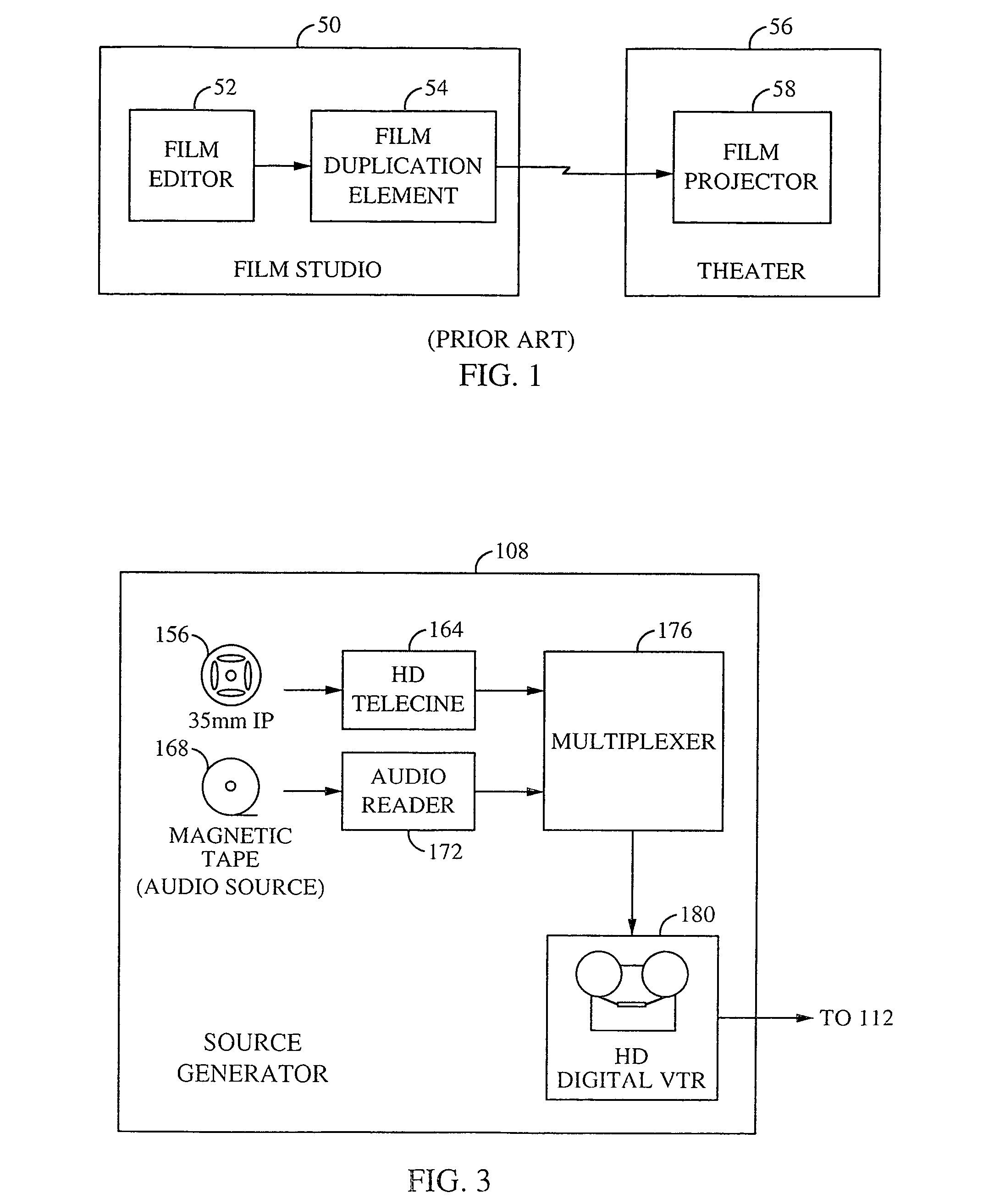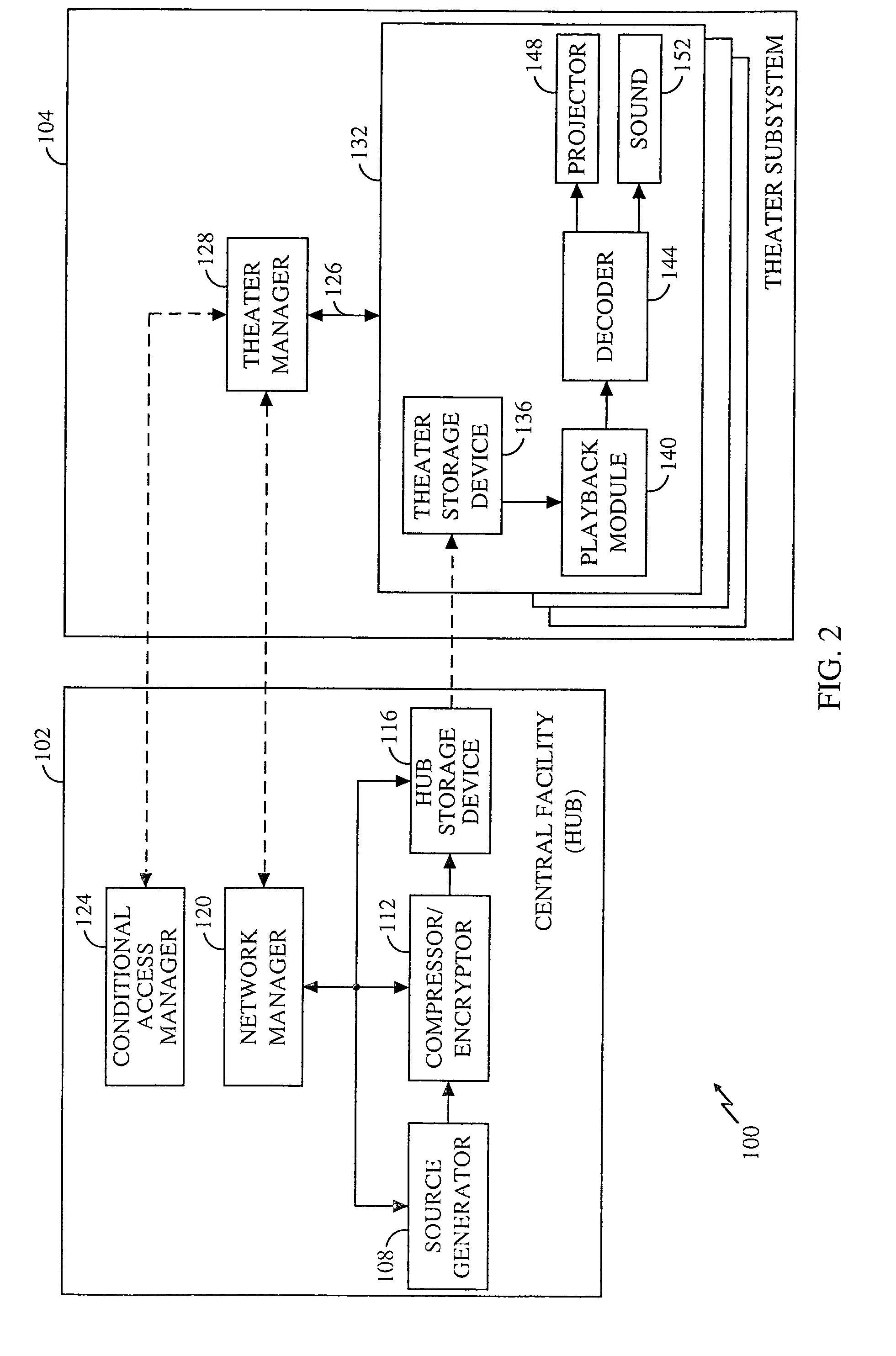Apparatus and method for encoding and storage of digital image and audio signals
a digital image and audio signal technology, applied in the field of encoding digital and audio images, can solve the problems of high cost of making a large number of film duplicates, inability to provide high fidelity multi-channel audio programming, and inherent limitations, and achieve cost-effective and flexible presentation options
- Summary
- Abstract
- Description
- Claims
- Application Information
AI Technical Summary
Benefits of technology
Problems solved by technology
Method used
Image
Examples
Embodiment Construction
[0050] The present invention comprises an apparatus and method, sometimes referred to herein as “digital cinema”, for the electronic generation, compression, encryption, and storage of audio / visual programming, such as motion pictures in theater systems, theaters, theater complexes, and / or presentation systems.
[0051] Digital cinema incorporates innovation in image and audio compression, projection technology, encryption methodology, and many other areas. Digital cinema is designed to replace the current method of physical distribution of celluloid film to each play back or projection location such as theaters or remote auditoriums. Digital cinema eliminates the need for duplication of celluloid film, and offers the potential for exceptional audio / visual quality as well as built-in security measures. Programs may be transmitted to theaters and stored on storage devices, such as removable hard drives (RHD) or digital versatile disks (DVD), for display at later times.
[0052] While the...
PUM
| Property | Measurement | Unit |
|---|---|---|
| length | aaaaa | aaaaa |
| size | aaaaa | aaaaa |
| time synchronization | aaaaa | aaaaa |
Abstract
Description
Claims
Application Information
 Login to View More
Login to View More - R&D
- Intellectual Property
- Life Sciences
- Materials
- Tech Scout
- Unparalleled Data Quality
- Higher Quality Content
- 60% Fewer Hallucinations
Browse by: Latest US Patents, China's latest patents, Technical Efficacy Thesaurus, Application Domain, Technology Topic, Popular Technical Reports.
© 2025 PatSnap. All rights reserved.Legal|Privacy policy|Modern Slavery Act Transparency Statement|Sitemap|About US| Contact US: help@patsnap.com



